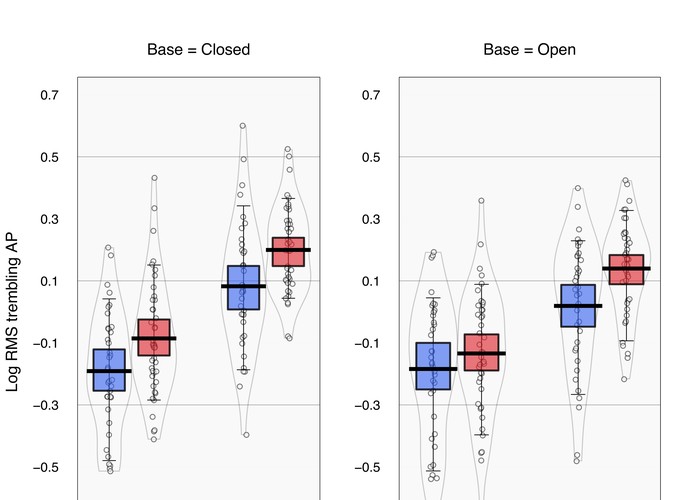Abstract
A prominent effect of acute cannabis use is impaired motor coordination and driving performance. However, few studies have evaluated balance in chronic cannabis users, even though density of the CB1 receptor, which mediates the psychoactive effects of cannabis, is extremely high in brain regions critically involved in this fundamental behavior. The present study measured postural sway in regular cannabis users and used rambling and trembling analysis to quantify the integrity of central and peripheral nervous system contributions to the sway signal.Postural sway was measured in 42 regular cannabis users (CB group) and 36 non-cannabis users (N-CB group) by asking participants to stand as still as possible on a force platform in the presence and absence of motor and sensory challenges. Center of pressure (COP) path length was measured, and the COP signal was decomposed into rambling and trembling components. Exploratory correlational analyses were conducted between sway variables, cannabis use history, and neurocognitive function. The CB group had significantly increased path length and increased trembling in the anterior-posterior (AP) direction. Exploratory correlational analyses suggested that AP rambling was significantly inversely associated with visuo-motor processing speed. Regular cannabis use is associated with increased postural sway, and this appears to be predominantly due to the trembling component, which is believed to reflect the peripheral nervous system’s contribution to the sway signal.
